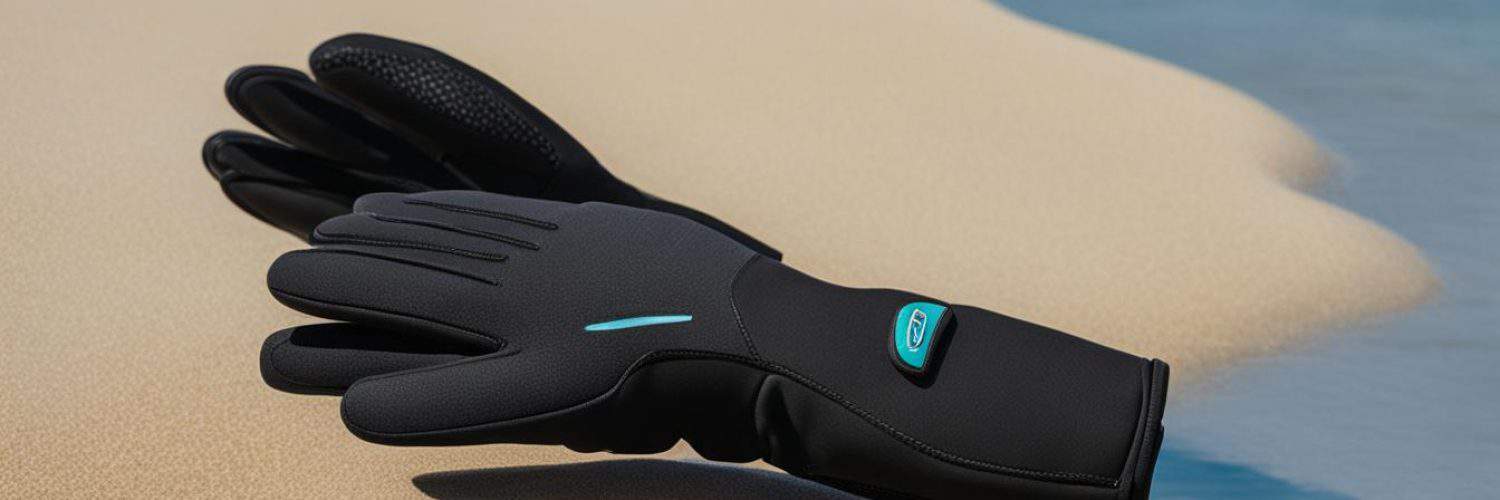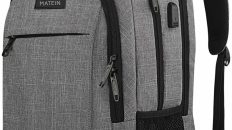Diving gloves are essential for protecting your hands during underwater adventures. They provide both protection against the rugged underwater environment and the necessary warmth to keep your hands functional. This article will guide you through the benefits, types, materials, and factors to consider when selecting the best travel dive gloves for your needs.
Key Takeaways:
- Choose durable dive gloves that can withstand the demands of underwater exploration.
- Look for waterproof scuba gloves to keep your hands dry during dives.
- Prioritize comfort when selecting snorkeling gloves for prolonged underwater activities.
- Consider high-performance dive gloves that offer a combination of protection and dexterity.
- Opt for ultimate underwater gloves that provide maximum thermal insulation.
- Choose protective scuba diving gloves that guard against cuts, scrapes, and stings.
- Look for breathable dive gloves that allow adequate airflow to prevent sweating.
The Importance of Diving Gloves
Diving gloves serve multiple purposes in the world of underwater exploration. They offer protection against cuts, scrapes, and stings from marine life, as well as thermal insulation to keep your hands warm in cold-water diving. However, they can reduce dexterity, making certain tasks more challenging. It’s important to strike a balance between protection and dexterity when choosing diving gloves.
| Benefits of Diving Gloves | Considerations for Diving Gloves |
|---|---|
| 1. Protection against cuts, scrapes, and stings from marine life | 1. Balance between protection and dexterity |
| 2. Thermal insulation for cold-water diving | |
When exploring the underwater world, it’s crucial to prioritize your safety. Diving gloves provide essential protection for your hands, shielding them from sharp rocks, coral, and potentially harmful sea creatures. Their durable construction and reinforced materials ensure that your hands remain unscathed even in challenging underwater environments.
In addition to protection, diving gloves also play a vital role in providing thermal insulation. Cold-water diving can quickly drain the heat from your body, making it challenging to focus on the beauty of the underwater world. With properly insulated gloves, your hands stay warm and functional, allowing you to enjoy your diving experience without discomfort or distraction.
While protection and thermal insulation are vital aspects, it’s essential to consider the impact on dexterity. Bulkier gloves can limit the flexibility and fine motor skills necessary for certain tasks underwater. Striking the right balance between protection and dexterity ensures that you can perform various actions accurately and efficiently, enhancing your overall diving experience.
“Finding the perfect diving gloves that offer the right combination of protection, thermal insulation, and dexterity is the key to an enjoyable and safe underwater adventure.”
Types of Diving Gloves
Diving gloves come in various types designed for different diving conditions. Each type offers unique features and benefits, catering to specific needs and preferences. Understanding the different types of diving gloves can help you make an informed decision when selecting the right pair for your diving adventures.
1. Warm-water gloves: These gloves are perfect for diving in warm-water environments or tropical regions. They are designed to prioritize dexterity, allowing you to easily handle equipment and perform delicate tasks underwater. Additionally, warm-water gloves offer excellent protection against cuts, scrapes, and stings from marine life.
2. Cold water gloves: If you’re planning to dive in colder waters, cold water gloves are essential to keep your hands warm and comfortable. These gloves provide superior thermal insulation, shielding your hands from the cold temperatures. They are typically thicker and provide extra warmth during extended dives in chilly waters.
3. Three-finger gloves: Three-finger gloves, also known as lobster gloves, are a popular choice for cold-water diving. These gloves offer increased thermal protection compared to traditional five-finger gloves. By keeping your fingers together, three-finger gloves minimize heat loss and retain warmth, making them ideal for colder conditions.
4. Diving mittens: Diving mittens are the warmest option for cold-water diving. They provide maximum thermal insulation by keeping all your fingers together. However, diving mittens often sacrifice dexterity due to their design. They are recommended for divers who prioritize warmth over fine motor skills.
5. Dry gloves: Dry gloves are a unique type of diving gloves that keep your hands completely dry throughout your dive. These gloves are typically used with drysuits and utilize specialized sealing systems to maintain a dry environment. Dry gloves are an excellent choice for divers who need maximum warmth and comfort during their underwater explorations.
6. Webbed paddle gloves: Webbed paddle gloves are specifically designed for specialized diving activities, such as adaptive diving or disabled diving. These gloves feature webbed fingers that provide additional propulsion underwater, enhancing maneuverability. They can be beneficial for divers with physical limitations or those seeking extra power and control.
Considering the various types of diving gloves available ensures that you choose the right pair to suit your diving needs and environmental conditions.
Diving gloves come in various types designed for different diving conditions:
| Type of Diving Gloves | Features |
|---|---|
| Warm-water gloves | Prioritize dexterity and protection against cuts and scrapes |
| Cold water gloves | Offer superior insulation to keep hands warm in colder water |
| Three-finger gloves | Provide increased thermal protection compared to five-finger gloves |
| Diving mittens | Offer the highest level of warmth but sacrifice dexterity |
| Dry gloves | Keep hands completely dry and provide maximum warmth |
| Webbed paddle gloves | Feature webbed fingers for enhanced maneuverability |
Materials Used in Dive Gloves
Dive gloves are a vital component of your diving gear, and they are available in a variety of materials, each offering unique advantages. Understanding these materials will help you choose the perfect gloves for your diving needs.
Fabric Gloves
Fabric gloves are thin and lightweight, providing excellent dexterity for intricate tasks underwater. They allow you to maintain a strong grip and handle equipment with ease. These gloves are ideal for divers who prioritize flexibility and maneuverability.
Neoprene Gloves
Neoprene gloves are popular among divers due to their remarkable thermal insulation and durability. The neoprene material ensures that your hands stay warm, even in cold water conditions. Additionally, neoprene gloves are resistant to wear and tear, making them long-lasting and reliable.
Additional Materials
Some dive gloves feature additional materials to enhance performance and protection. Kevlar is often incorporated into gloves to provide extra resistance against cuts and penetrations. Titanium-infused gloves offer enhanced warmth retention, making them ideal for colder water temperatures. Synthetic fleece linings provide added insulation, ensuring your hands stay comfortable during longer dives.
Latex and nitrile are commonly used for the palm and finger areas of dive gloves. These materials offer excellent grip and resistance to abrasion, allowing you to handle equipment and navigate underwater environments safely.
In summary, dive gloves are crafted from various materials to cater to different diving needs. Fabric gloves provide exceptional dexterity, while neoprene gloves prioritize thermal insulation and durability. Additional materials like kevlar, titanium, synthetic fleece, latex, and nitrile enhance performance and protection. When selecting dive gloves, consider the specific benefits offered by each material to find the perfect pair for your diving adventures.
Choosing the Right Dive Gloves for Warm Water
If you’re planning on diving in warm water, it’s essential to choose the right dive gloves that provide both protection and dexterity. Lightweight materials are key to ensure you can easily maneuver underwater while still keeping your hands safe.
Fabric or thin neoprene gloves are highly recommended for warm-water diving. These gloves are designed to prioritize dexterity, allowing you to handle equipment and perform tasks with ease. Additionally, they provide essential protection against cuts and scrapes.
When selecting warm-water diving gloves, look for features that enhance both your safety and performance. Protective linings offer an extra layer of defense against potential hazards in the water. Grip-enhancing palms can help you securely hold onto your gear, preventing accidental slips.
Pro Tip: Well-fitting work gloves can also be a cost-effective option for warm-water diving. Just ensure they are made from lightweight, durable materials that provide the necessary protection and dexterity.
Choosing the right dive gloves for warm water is crucial to ensure your comfort and safety during your underwater adventures. Consider the materials, protection level, and dexterity offered by different gloves to find the perfect fit for your needs.
| Glove | Material | Features | Price Range |
|---|---|---|---|
| Fabric Dive Gloves | Fabric | Protective linings, grip-enhancing palms | $ |
| Thin Neoprene Dive Gloves | Neoprene | Protective linings, grip-enhancing palms | $$ |
Selecting Dive Gloves for Cold Water
In cold-water diving, it’s essential to choose the right gloves that will keep your hands warm and protected. Cold-water gloves are specifically designed to withstand the lower temperatures, ensuring comfort and safety during your dives.
One crucial factor to consider is the neoprene thickness of the gloves. Thicker neoprene provides better insulation and helps retain the heat generated by your body. A typical range for cold-water gloves is between 5mm to 7mm, offering optimal warmth in chilly underwater environments.
Another feature to look for is thermal linings or comfortable fleece-type inners. These linings provide an extra layer of insulation, keeping your hands cozy throughout your dive. They help trap the heat and prevent it from escaping, ensuring your hands stay warm even in frigid waters.
When selecting cold-water gloves, you may also want to consider gloves with kevlar reinforcement. Kevlar is a durable material that adds an extra layer of protection against cuts and penetrations, enhancing the overall durability and longevity of the gloves.
Additionally, the design of the gloves is worth considering. Conventional 5-fingered gloves provide better dexterity, allowing you to handle equipment and perform more intricate tasks underwater. However, 3-finger gloves or mittens can offer increased thermal protection by keeping your fingers together, reducing heat loss through individual fingers.
Now let’s take a look at the different glove options for cold-water diving:
| Glove Type | Neoprene Thickness | Thermal Lining | Kevlar Reinforcement |
|---|---|---|---|
| Conventional 5-fingered gloves | 5mm – 7mm | Yes | Yes |
| 3-finger gloves | 5mm – 7mm | Yes | Yes, for palm area |
| Mittens | 5mm – 7mm | Yes | Yes, for palm area |
Choose the glove design that suits your preferences and the water temperature you’ll be diving in. Remember, it’s crucial to strike a balance between warmth and dexterity to ensure an enjoyable and safe diving experience.
Dry Gloves for Maximum Warmth and Versatility
Dry gloves are a must-have for drysuit divers who prioritize warmth and versatility during their underwater adventures. These innovative gloves are designed to keep your hands completely dry, allowing you to maintain dexterity and comfort throughout your dives.
Typically made from flexible PVC, dry gloves offer exceptional durability and waterproof protection. This material ensures that no water seeps into the gloves, keeping your hands dry and comfortable even in wet conditions. The PVC construction also provides a high level of flexibility, allowing for a natural range of motion while handling equipment or performing tasks underwater.
For added warmth and insulation, you can wear thermal inner gloves underneath the dry gloves. These thermal inner gloves are designed to trap heat close to your skin, providing an extra layer of warmth in cold-water diving environments. With the combination of dry gloves and thermal inner gloves, you can dive in colder temperatures without sacrificing comfort.
To connect the dry gloves to your drysuit, specialized ring systems are used. These ring systems create a secure and watertight seal between the gloves and the suit, preventing any water from entering the suit through the wrists. These systems allow for equalization of pressure throughout your dives, ensuring optimal comfort and safety underwater.
Whether you’re exploring icy waters or navigating through challenging underwater environments, dry gloves offer a practical and reliable solution for maximum warmth and versatility. Invest in a quality pair of dry gloves and elevate your diving experience to new depths.
“Dry gloves are a game-changer for drysuit divers. They provide unparalleled warmth and flexibility, allowing us to explore colder waters with confidence.” – Emily Thompson, Experienced Diver
The Benefits of Dry Gloves:
- Keeps your hands completely dry during dives
- Provides exceptional warmth and insulation
- Allows for a natural range of motion and dexterity
- Prevents water from entering the drysuit through the wrists
- Enables equalization of pressure for a comfortable dive
Tips for Choosing the Right Dive Gloves
When it comes to selecting the perfect dive gloves, there are several key factors to consider. These factors will ensure that your gloves provide the necessary thermal protection, glove thickness, dexterity, and additional warmth contributors for a comfortable and enjoyable diving experience.
1. Thermal Protection
One of the primary functions of dive gloves is to provide thermal protection for your hands. Depending on the water temperature, you’ll need gloves with the appropriate thickness to keep your hands warm. Thicker gloves, typically ranging from 5mm to 7mm, are ideal for cold water, while thinner gloves are suitable for warm-water diving.
2. Glove Thickness
The thickness of your dive gloves should be determined by the water temperature. Thicker gloves offer better insulation for cold water, while thinner gloves provide more dexterity and flexibility for warm-water diving. Make sure to choose gloves with the right thickness to keep your hands comfortable and functional throughout your dive.
3. Dexterity
Dexterity is essential for operating gear, handling equipment, and performing underwater tasks with precision. When selecting dive gloves, opt for gloves that strike a balance between protection and dexterity. Look for gloves that offer flexibility and a snug fit, allowing you to maintain a good grip and perform intricate movements effortlessly.
4. Additional Warmth Contributors
Several features can contribute to additional warmth when it comes to dive gloves. Look for gloves with wrist seals, which help prevent water from entering and provide a secure fit. Sealed seams also play a crucial role in keeping your hands warm by minimizing water leakage. Consider gloves made from materials like titanium, known for their excellent heat retention properties.
5. Comfort
Comfort is paramount during any dive. Choose gloves that offer a comfortable fit and are designed with ergonomic considerations in mind. Look for gloves with adjustable wrist closures and customizable features to ensure a snug, yet comfortable fit. This will prevent discomfort and potential distractions during your underwater exploration.
Remember, the right pair of dive gloves can enhance your diving experience by providing the necessary protection, warmth, and dexterity you need. Take the time to explore different options and choose gloves that meet your specific requirements. Your hands will thank you!
Best Dive Gloves Recommendations
Based on the various types and factors to consider, here are some top dive glove recommendations for different water temperatures and diving conditions:
Warm Water Gloves
For warm water diving, the Probe Insulator Gloves are a great choice. These lightweight gloves offer excellent dexterity and protection against cuts and scrapes. They are perfect for tropical diving adventures.
Temperate Water Gloves
If you’re diving in temperate water, the Mares XR Tek Amara Gloves are recommended. These gloves provide warmth and protection while maintaining reasonable dexterity. They are designed to withstand the demands of temperate water diving.
Temperate Water Gloves with Dexterity
For those seeking both warmth and dexterity in temperate water, the Probe iDry Quick-Dry Dive Gloves are an excellent choice. These gloves use innovative materials to offer exceptional warmth without sacrificing dexterity. They are perfect for divers who need maximum flexibility.
Cold Water Gloves
In cold water diving, the Waterproof G1 Kevlar Dive Gloves are highly recommended. These gloves are built to withstand harsh cold-water conditions while providing superior durability. The kevlar reinforcement ensures long-lasting protection and thermal insulation.
Dive Mitts
If you’re looking for exceptional warmth in cold-water diving, the Fourth Element Neoprene Hydrolock Dive Mitts are the top choice. These mitts offer unmatched insulation and are designed to keep your hands warm and comfortable even in the coldest waters. Perfect for extreme cold-water diving.
Whichever type of dive gloves you choose, ensuring the right fit and considering other factors like wrist seals, seams, and additional warmth contributors will enhance your diving experience and keep your hands protected.
Conclusion
When it comes to underwater adventures, selecting the right dive gloves is of utmost importance. These gloves serve the dual purpose of protecting your hands and maintaining dexterity throughout your dives. By considering the type, material, and thickness of the gloves based on the water temperature and your specific needs, you can enhance your diving experience.
When choosing dive gloves, strike a balance between protection and dexterity. Warm-water gloves made from lightweight materials like fabric or thin neoprene are ideal for maintaining dexterity while offering protection against cuts and scrapes. In cold water, opt for gloves with thicker neoprene, thermal linings, and possibly kevlar reinforcement for superior insulation and durability.
Additionally, dry gloves provide maximum warmth and versatility for drysuit divers. These gloves, made from flexible PVC, keep your hands completely dry and can be worn with thermal inner gloves for added insulation. Consider features like specialized ring systems for connecting gloves to drysuit wrists, ensuring equalization of pressure during dives.
To conclude, prioritize both protection and dexterity when selecting dive gloves. By considering the water temperature, material, and thickness, you can find gloves that offer the ideal balance for your needs. So, gear up with the right dive gloves and enjoy your underwater adventures with confidence and comfort.
FAQ
What is the purpose of diving gloves?
Diving gloves protect your hands from cuts, scrapes, stings, and provide thermal insulation in cold-water diving.
What are the different types of diving gloves?
The different types include warm-water gloves, cold-water gloves, three-finger gloves, diving mittens, dry gloves, and webbed paddle gloves.
What materials are used in dive gloves?
Dive gloves are crafted from materials such as fabric, neoprene, kevlar, titanium, synthetic fleece, latex, and nitrile.
How do I choose the right dive gloves for warm water?
Choose lightweight gloves made from fabric or thin neoprene that prioritize dexterity and protection against cuts and scrapes.
What should I consider when selecting dive gloves for cold water?
Consider thicker neoprene gloves with thermal linings, comfortable fleece-type inners, and optional kevlar reinforcement for enhanced durability.
What are dry gloves and when should I use them?
Dry gloves are made from flexible PVC and are ideal for drysuit divers seeking maximum warmth and versatility. They keep your hands completely dry.
What factors should I consider when choosing dive gloves?
Consider factors such as thermal protection, glove thickness based on water temperature, dexterity for operating gear, and additional warmth contributors like wrist seals, seam seals, and materials like titanium.
Can you recommend some top dive gloves?
For warm water, the Probe Insulator Gloves are a great choice. In temperate water, consider the Mares XR Tek Amara Gloves. For added dexterity in temperate water, the Probe iDry Quick-Dry Dive Gloves are recommended. In cold water, the Waterproof G1 Kevlar Dive Gloves provide durability, and the Fourth Element Neoprene Hydrolock Dive Mitts offer exceptional warmth.
Why are dive gloves important for protecting hands and maintaining dexterity?
Dive gloves protect your hands from potential injuries and keep them warm, allowing you to focus on your underwater adventures while maintaining the necessary dexterity.







Add comment